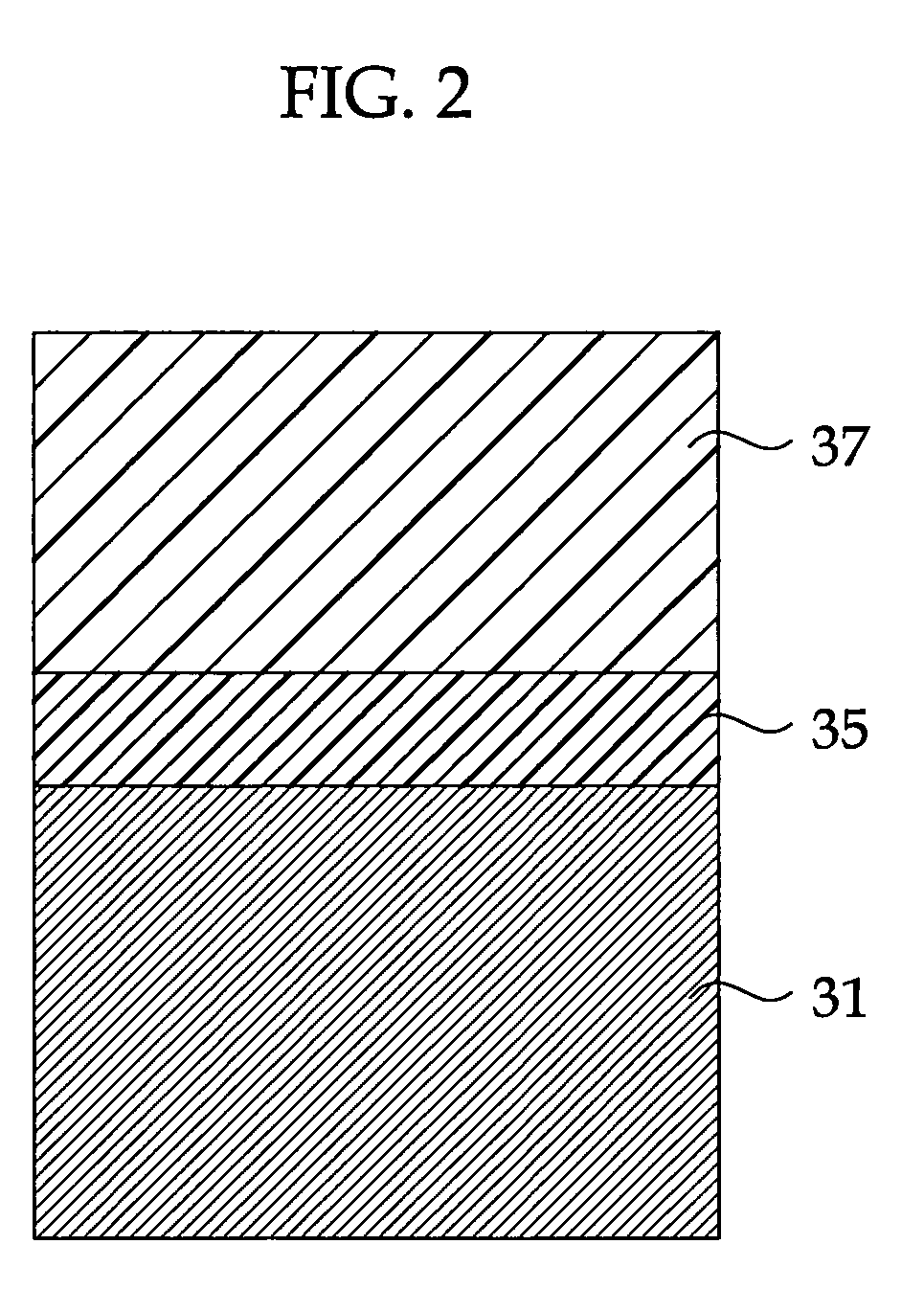[0017]It is therefore an object of the present invention, which was conceived in view of the above problems, to provide a photoconductor which has high durability, suppresses image deterioration due to residual potential rise or image blurring, and enables high-quality images to be obtained even after long periods of repeated use. It is a further object of the present invention to provide an electrophotographic method, electrophotographic apparatus and electrophotographic process
cartridge which make use of such a photoconductor so that photoconductor replacement is unnecessary, high-speed printing and a compact apparatus can be realized using a small
diameter photoconductor, and high
image quality can be consistently obtained even after repeated use.
[0018]It is known that, in order to improve the durability of an electrophotographic photoconductor, it is effective to form a protective layer containing a filler on the outermost surface of the photoconductor, but this has the additional effect of residual potential rise or image blurring leading to image deterioration. The inventors, as a result of intensive studies, discovered that image blurring could be suppressed by incorporating a filler having highly insulating properties in the protective layer, and that residual potential rise could be suppressed by incorporating an
organic compound having an
acid value of 10 mgKOH / g to 400 mgKOH / g. One factor which enables reduction of residual potential is the addition of a material having an
acid value, but another factor is the improvement of filler dispersibility resulting therefrom. Also, improving filler dispersibility has a number of different advantages. Specifically, it not only has the effect of suppressing residual potential rise, but as it prevents decrease of
transmittance of the writing light in the protective layer and unevenness of
image density, it also provides better
image quality, improves
wear resistance and prevents the appearance of film defects. However, due to the
chemical structure of this organic compound, oxidizing gases such as
ozone or
NOx which may be produced during use are easily adsorbed, and in some cases can lower the resistance of the outermost
surface layer or lead to problems such as image deletion. The inventors, by carrying out further studies, discovered that by incorporating at least one the compounds represented by the following general formulas 1 and 2:
[0026]By satisfying the following conditions, the inventors were able to provide an electrophotographic photoconductor which satisfied the dual objectives of high durability and high
image quality, and which enabled high quality images to be consistently obtained even after repeated use, together with an electrophotographic method, electrophotographic apparatus and electrophotographic process
cartridge which allowed high-quality images to be consistently obtained even after repeated use, and thereby arrived at the present invention.
[0034]However, the studies carried out by the inventors showed that it was not only the physical properties of the filler which had an effect on the residual potential and the image quality, and that the filler dispersibility made a large contribution. In other words, when the filler does not stick together and dispersibility is good, the charge which is implanted to the protective layer easily reaches the surface, so not only can residual potential rise be suppressed, but also the reproducibility of dots formed by the toner is more reliable and a high-resolution image can be obtained. On the other hand, when the filler is largely agglomerated, the progress of the charge is obstructed by the filler, so that not only does the resolution decrease due to the decrease in
linearity of charge movement, but also the charge is easily trapped and leads to an increase of residual potential.
[0035]Agglomeration of the filler tends to occur with inorganic (hydrophilic) fillers having a
low affinity for organic solvents or binder resins. The affinity between the
inorganic filler and
organic solvent or binder resin can be enhanced by adding the organic compound having an acid value of 10 mgKOH / g to 400 mgKOH / g discovered in the present invention, which has the effect of enhancing filler dispersibility. It also has the effect of reducing the
film resistance, which has increased too much due to the addition of acid, to a suitable level. Due to this synergistic effect, not only is the residual potential of the photoconductor decreased, but due to the improvement in filler dispersibility, the scatter of dots formed by the toner is reduced, and a high-quality image with more faithful dot
reproduction can be obtained.
[0036]The improvement of filler dispersibility has very many advantages regarding improvement of image quality, such as improved light
transmittance in the outermost
surface layer and suppression of
image density unevenness, while it also improves
wear resistance and suppresses film defects. In addition, a protective layer-forming
coating solution with high stability and long life can be obtained, and as a result, an electrophotographic photoconductor which achieves the dual objectives of high durability and high image quality can be consistently obtained over a long period.
 Login to View More
Login to View More 


